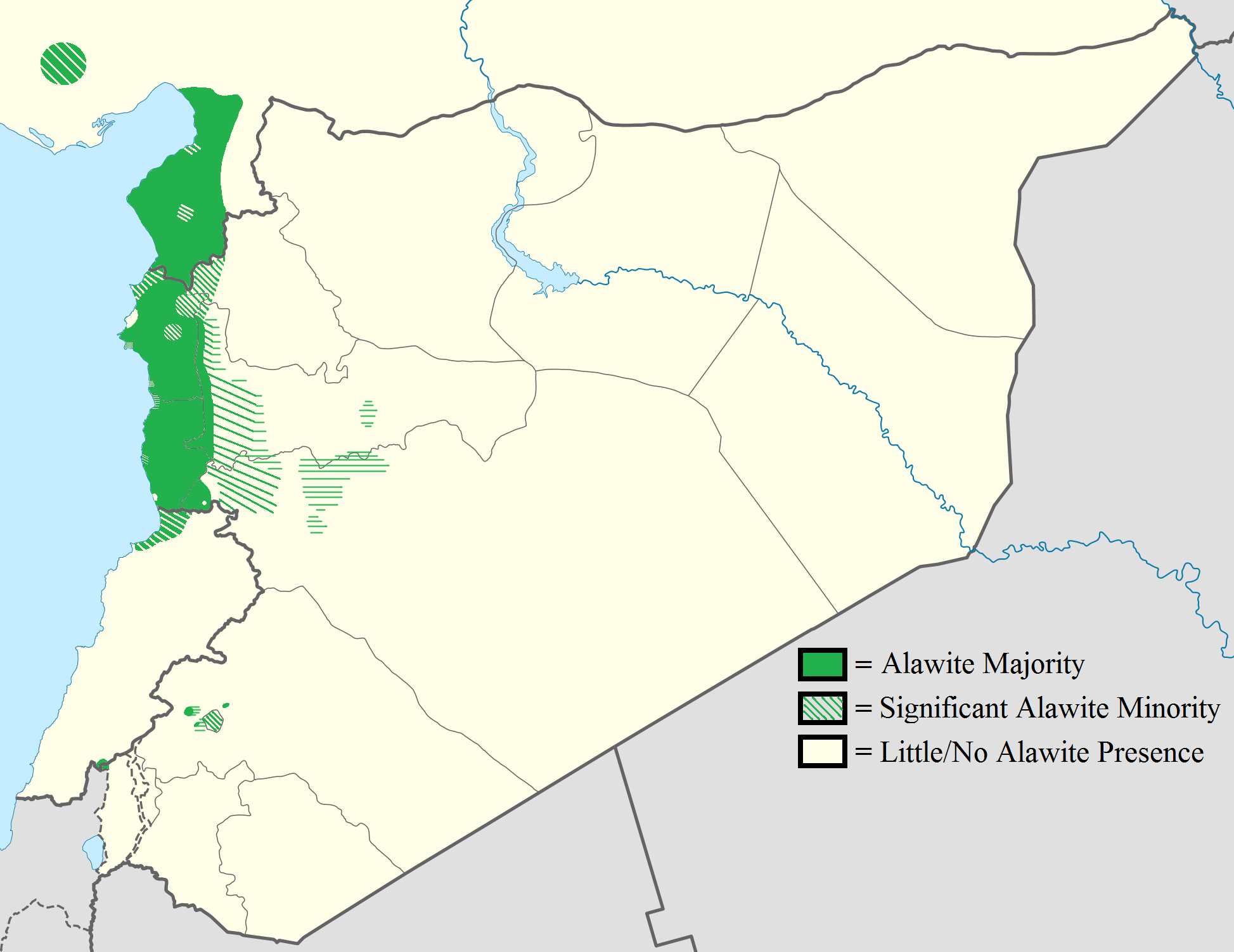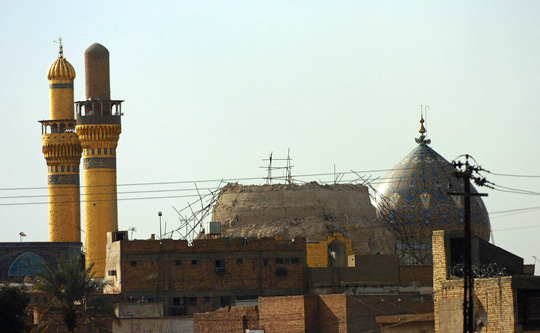|
Latakia Governorate
Latakia Governorate ( / ALA-LC: ''Muḥāfaẓat al-Lādhiqīyah''), also transliterated as Ladhakia, is one of the 14 Governorates of Syria, governorates of Syria. It is situated in northwestern Syria, bordering Turkey's Hatay Province to the north, Idlib Governorate, Idlib and Hama Governorates to the east, Tartus Governorate to the south, and the Mediterranean Sea to the west. Its reported area varies in different sources from to . The governorate has a population of 1,008,000 (2011 estimate). History The governorate was historically part of the Alawite State, which existed from 1920 to 1936.Longrigg, Stephen Hemsley. "Syria and Lebanon Under French Mandate." London: Oxford University Press, 1958. Tartus Governorate was formerly included as part of Latakia, before being split off circa 1972. The region has been relatively peaceful during the Syrian civil war, being a generally pro-Bashar al-Assad, Assad region that had largely remained under government control. The Free S ... [...More Info...] [...Related Items...] OR: [Wikipedia] [Google] [Baidu] |
Governorates Of Syria
Syria is a unitary state, but for administrative purposes, it is divided into fourteen governorates, also called provinces or counties in English (Arabic language, Arabic ''muḥāfaẓāt'', singular ''Muhafazah, muḥāfaẓah''). The governorates are divided into sixty-five Districts of Syria, districts (''manāṭiq'', singular ''Mintaqah, minṭaqah''), which are further divided into subdistricts (''nawāḥī'', singular ''Nahiyah, nāḥiyah''). The ''nawāḥī'' contain villages, which are the smallest administrative units. Each governorate is headed by a governor, appointed by the president, subject to cabinet approval. The governor is responsible for administration, health, social services, education, tourism, public works, transportation, domestic trade, agriculture, industry, civil defense, and maintenance of law and order in the governorate. The minister of each local administration works closely with each governor to coordinate and supervise local development proj ... [...More Info...] [...Related Items...] OR: [Wikipedia] [Google] [Baidu] |
Citadel Of Salah Ed-Din
Sahyun Castle (), also known as the Castle of Saladin (), is a medieval castle in northwestern Syria. It is located 7 km east of Al-Haffah town and 30 km east of the city of Latakia, in high mountainous terrain on a ridge between two deep ravines and Forests of Syria, surrounded by forest, the site has been fortified since at least the mid 10th century. In 975 the Byzantine Emperor John I Tzimiskes captured the site and it remained under Byzantine control until around 1108. Early in the 12th century the Franks assumed control of the site and it was part of the newly formed Crusader state of the Principality of Antioch. The Crusaders undertook an extensive building programme, giving the castle much of its current appearance. In 1188 it fell to the forces of Saladin after a three-day siege. The castle was again besieged in 1287, this time both defender and belligerent were Mamluks. In 2006, the castles of Qal'at Salah El-Din and Krak des Chevaliers were recognised ... [...More Info...] [...Related Items...] OR: [Wikipedia] [Google] [Baidu] |
March 2025 Western Syria Clashes
March is the third month of the year in both the Julian and Gregorian calendars. Its length is 31 days. In the Northern Hemisphere, the meteorological beginning of spring occurs on the first day of March. The March equinox on the 20 or 21 marks the astronomical beginning of spring in the Northern Hemisphere and the beginning of autumn in the Southern Hemisphere, where September is the seasonal equivalent of the Northern Hemisphere's March. History The name of March comes from '' Martius'', the first month of the earliest Roman calendar. It was named after Mars, the Roman god of war, and an ancestor of the Roman people through his sons Romulus and Remus. His month ''Martius'' was the beginning of the season for warfare, and the festivals held in his honor during the month were mirrored by others in October, when the season for these activities came to a close. ''Martius'' remained the first month of the Roman calendar year perhaps as late as 153 BC, and several religious ... [...More Info...] [...Related Items...] OR: [Wikipedia] [Google] [Baidu] |
2025 Massacres Of Syrian Alawites
A series of mass killings and massacres against Alawites occurred in Syria from 6 March 2025 to 17 March 2025, with a resurgence in early April. They were part of communal and sectarian violence by fighters aligned with the Syrian caretaker government (including locally mobilised civilians, Syrian National Army (SNA) militias and Saraya Ansar al-Sunnah), in addition to armed remnants of the former Assad regime against Sunnis. The typical pattern of the attacks involved armed gunmen showing up at civilians' doors, interrogating them by asking whether they are Alawite or Sunni, and then targeting and killing them based solely on their response. The events followed large-scale attacks by pro-Assad insurgents on 6 March as well as the ongoing clashes in Western Syria in the Syrian civil war. As of 17 March 2025, the UK-based independent monitoring group Syrian Network for Human Rights (SNHR) reported that 1,084 people, including civilians and fighters, were killed in the cl ... [...More Info...] [...Related Items...] OR: [Wikipedia] [Google] [Baidu] |
Syrian Armed Forces
The Syrian Armed Forces () are the military forces of Syria. Up until the fall of Bashar al-Assad's Arab Socialist Ba'ath Party – Syria Region, Ba'ath Party Ba'athist Syria, regime in December 2024, the Syrian Arab Armed Forces were the state armed forces. They consisted of the Syrian Army, Syrian Arab Army, Syrian Arab Air Force, Syrian Arab Navy, Syrian Air Defence Force, Syrian Arab Air Defence Force, and paramilitary forces, such as the National Defence Forces. According to the 2012 Constitution of Ba'athist Syria, the President of Syria was the Commander-in-Chief of the Armed Forces. The Ministry of Defense (Syria), Minister of Defense held the position of Deputy Commander-in-Chief of the Army and Armed Forces. After 1943, the Syrian Army played a major role in Syria's governance, mounting six military coups: two in 1949, including the March 1949 Syrian coup d'état and the August 1949 Syrian coup d'état, August 1949 coup by Colonel Sami al-Hinnawi, and one each in 195 ... [...More Info...] [...Related Items...] OR: [Wikipedia] [Google] [Baidu] |
Syrian Observatory For Human Rights
The Syrian Observatory for Human Rights (also known as SOHR; ), founded in May 2006, is a United Kingdom-based information office whose stated aim is to document human rights abuses in Syria; since 2011 it has focused on the Syrian Civil War. It has been frequently quoted by major news outlets since the beginning of the war about daily numbers of deaths from all sides in the conflict and particularly civilians killed in airstrikes in Syria. The SOHR has been described as being "pro- opposition" and anti- Assad, but has reported on war crimes committed by all sides of the conflict. History and operations The Syrian Observatory for Human Rights is run by "Rami Abdulrahman" (sometimes spelled as Rami Abdul Rahman), from his home in Coventry. Abdulrahman is a Syrian Sunni who owns a clothing shop. Born Osama Suleiman, he adopted a pseudonym during his years of activism in Syria and has used it publicly ever since. After being imprisoned three times in Syria, Abdulrahman fled to th ... [...More Info...] [...Related Items...] OR: [Wikipedia] [Google] [Baidu] |
May 2016 Jableh And Tartous Bombings
On 23 May 2016, eight bombings were carried out by the Islamic State of Iraq and the Levant in Jableh and Tartus, coastline cities in Syria. 184 people were killed and at least 200 people injured. One of the major explosions occurred at the Jableh National Hospital, in the city of Jableh, where likely 43 people were killed. Doctors and nurses were among the dead. The bombings in Tartus targeted a bus station (bus stations were also targeted in Jableh). Many of the blasts were only a few seconds apart. The attacks took place in relatively violence-free areas of Syria. Many of the facilities, which were hit, are no longer operational. The cities were government-controlled territory, that hosted Russian military bases. Russia has a naval base in Tartus and an air base near Jableh. The Syrian government had accused Qatar, Saudi Arabia and Turkey of being behind the wave of bombings in these cities. See also * List of terrorist incidents, January–June 2016 *Timeline of the Syrian C ... [...More Info...] [...Related Items...] OR: [Wikipedia] [Google] [Baidu] |
Islamic State Of Iraq And The Levant
The Islamic State (IS), also known as the Islamic State of Iraq and the Levant (ISIL), the Islamic State of Iraq and Syria (ISIS) and Daesh, is a transnational Salafi jihadist organization and unrecognized quasi-state. IS occupied significant territory in Iraq and Syria in 2013, but lost most of it in 2019. In 2014, the group proclaimed itself to be a worldwide caliphate, and claimed religious, political, and military authority over all Muslims worldwide, a claim not accepted by the vast majority of Muslims. It is designated as a terrorist organisation by the United Nations and many countries around the world, including Muslim countries. By the end of 2015, its self-declared caliphate ruled an area with a population of about 12 million, where they enforced their extremist interpretation of Islamic law, managed an annual budget exceeding billion, and commanded more than 30,000 fighters. After a grinding conflict with American, Iraqi, and Kurdish forces, IS lost co ... [...More Info...] [...Related Items...] OR: [Wikipedia] [Google] [Baidu] |
2016 Latakia Offensive
The 2016 Latakia offensive, code-named Battle of Yarmouk, refers to a rebel operation launched in the northern Latakia Governorate in late June 2016. The aim of the offensive was to recapture the territory lost during the Army's offensive earlier in the year. The offensive Rebel capture of Kinsabba Between 27 and 30 June, the al-Nusra-led Army of Conquest, supported by FSA groups, launched the offensive on the Turkmen and Kurd Mountains, capturing several villages before they withdrew under Russian airstrikes. 33 rebels and 15 soldiers were killed in the fighting. Still, a second rebel assault one day later managed to capture Kinsabba, as well as a dozen nearby villages and hills. In reaction, the Russian Air Force conducted more than 100 airstrikes over Kinsabba and several other villages. On 2 July, the rebels captured the Jabal Qal’at mountaintop in the Turkmen mountains. The next day, the rebels captured the strategically significant village of Saraf and its surro ... [...More Info...] [...Related Items...] OR: [Wikipedia] [Google] [Baidu] |
2014 Latakia Offensive
The 2014 Latakia offensive was a rebel offensive in the Latakia Governorate of Syria launched on 21 March 2014 by rebel Islamist groups including Al-Nusra Front, which called the offensive " Anfal", while a coalition of Supreme Military Council rebel groups called the offensive "The Martyrs Mothers". The objectives of the offensive have been stated to be the taking over of all strategic observatories, government villages and the Mediterranean coast. Observers have stated a strategic aim was to force the Syrian army to redeploy forces to Latakia, which would relieve pressure on other rebels elsewhere in Syria. They reportedly succeeded in this with government forces being sent from Idlib, Hama and Aleppo to bolster defenses. During the offensive the Syrian military was joined by Hezbollah, Iraqi Shi'ite militia and Iranian military advisers. After almost two months of fighting, the offensive stalled and eventually petered out, with rebels losing most of their early gains. Howe ... [...More Info...] [...Related Items...] OR: [Wikipedia] [Google] [Baidu] |




